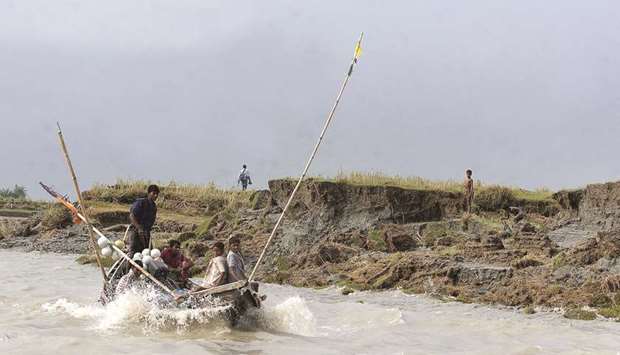The government said on Monday that 29 islands with a combined area of 125,370 acres (507sq km) had emerged from the Bay of Bengal
since 2007.
Every year Himalayan rivers carry an estimated 1bn tonnes of silts and deposit them in the Bay of Bengal off the coast of Bangladesh, forming islands in the shallow waters.
Many of these islands, known as chars in Bangladesh, are already inhabited and experts say they could mitigate the threat posed by global warming.
“Every year Bangladesh has new land emerging and new land being devoured by rivers and sea,” said Maminul Haque Sarker, head of the Center for Environment and Geographic Information Services.
He said studies by the Dhaka research centre had shown a net gain of territory of around
12-14sq km.
Most of the new land is near the estuary of the Meghna river, which is the confluence of the main tributaries of the two main Himalayan rivers of the Ganges and the Brahmaputra.
One of the islands has controversially been earmarked as a possible temporary base for the hundreds of thousands of Rohingya refugees from Myanmar currently living in squalid - mostly makeshift - camps in southern Bangladesh.
The United Nations says 615,000 refugees from the Muslim minority have crossed into Bangladesh from its Buddhist neighbour since late August.
The influx has overwhelmed existing facilities in the densely populated country, and authorities have struggled to find alternative land to house them.
A recent World Bank study projected that 40% of productive land in southern Bangladesh would be submerged by the year 2080 due to a rise in sea levels.
A decade ago the influential Intergovernmental Panel on Climate Change (IPCC) said a 1m (3ft) rise in sea levels would flood 17% of Bangladesh and create 20mn refugees by 2050.
Local scientists, however, criticised the study for failing to take into account the silt islands, which are highly fertile.
Water expert Zahirul Haque Khan said dams could be set up to trap the vast amounts of sediment that flows from Bangladesh’s rivers into the sea every year.
“Bangladesh can gain hundreds of square kilometres of new land by trapping silt through cross dams and engineering interventions,” said Khan, director of Institute of Water Modelling in Dhaka.



